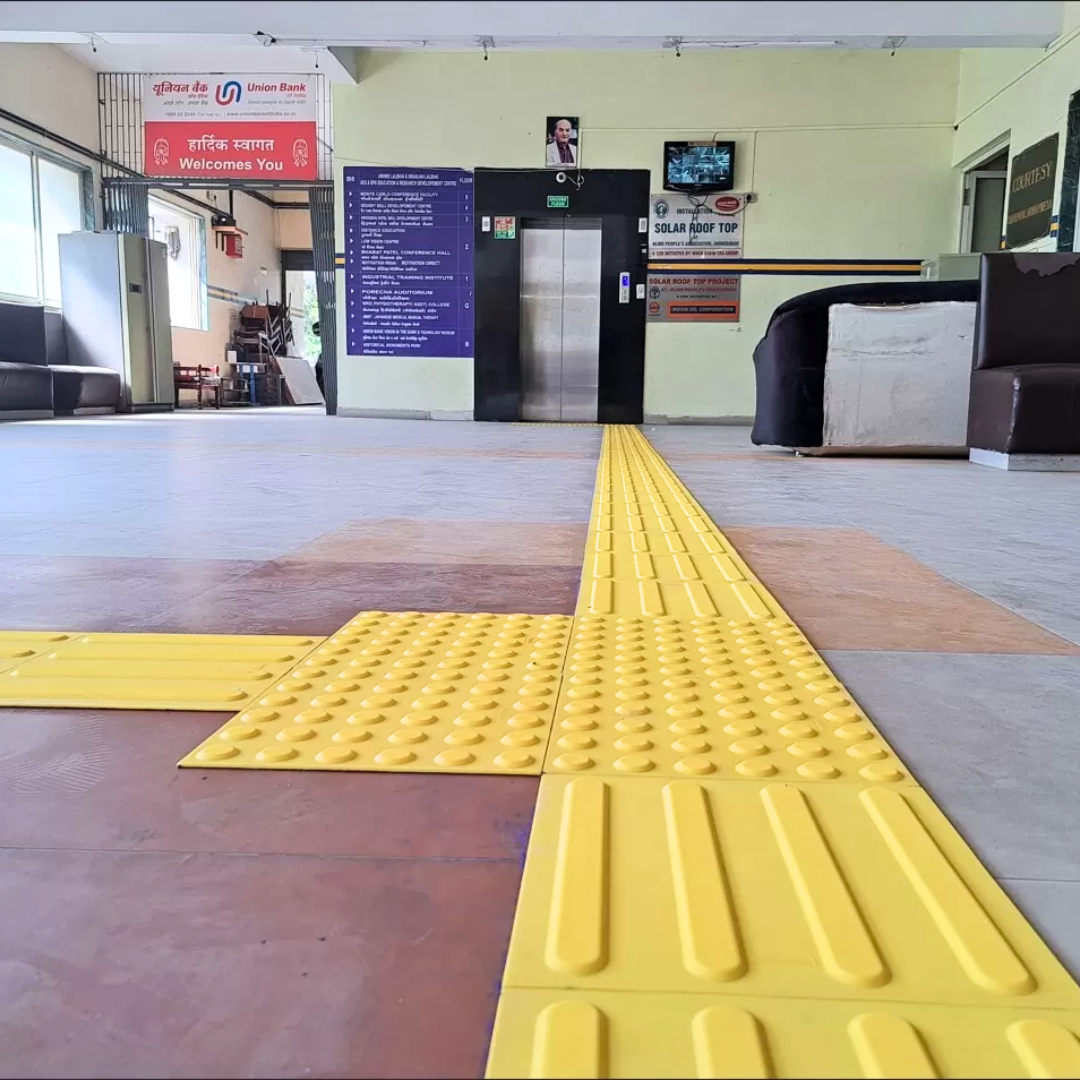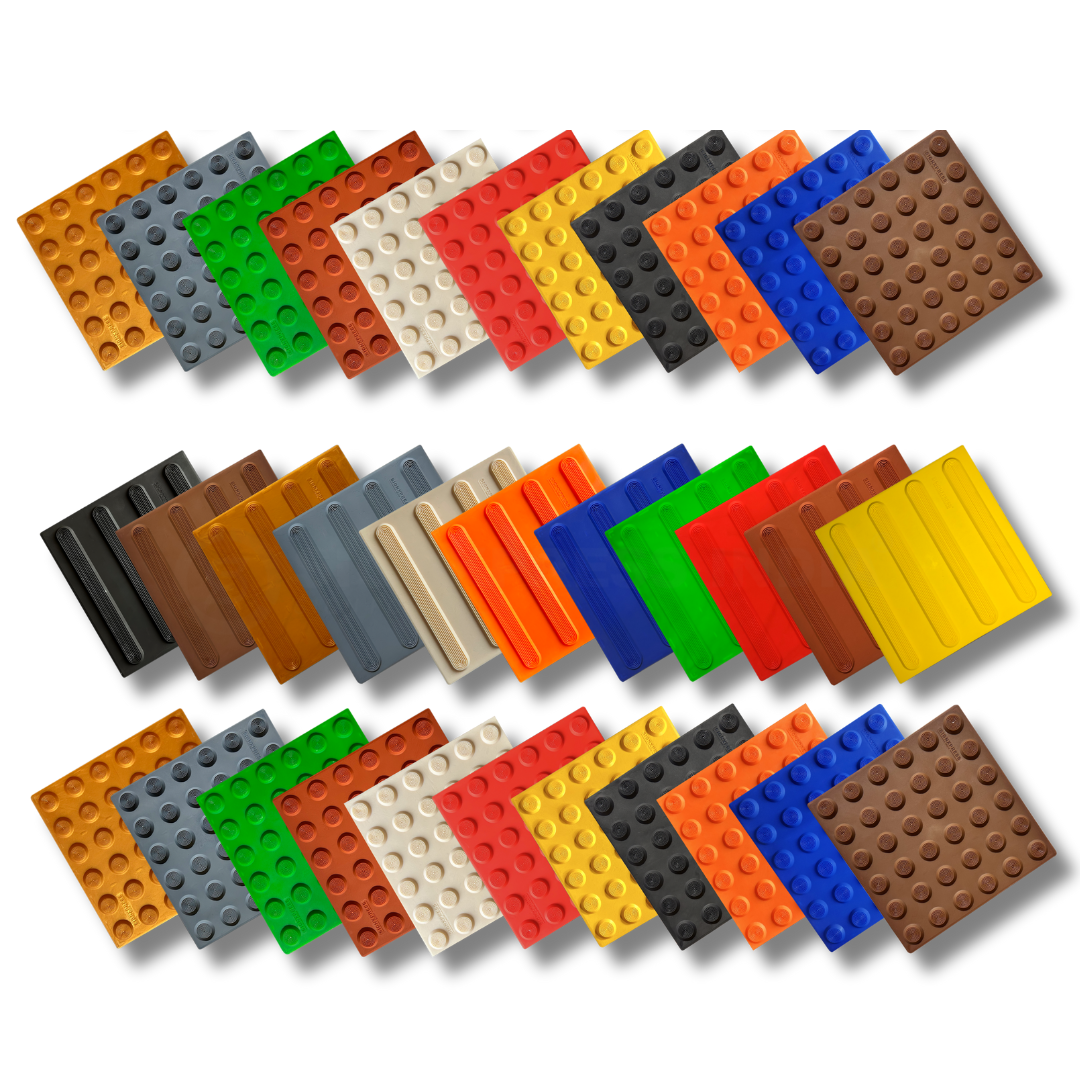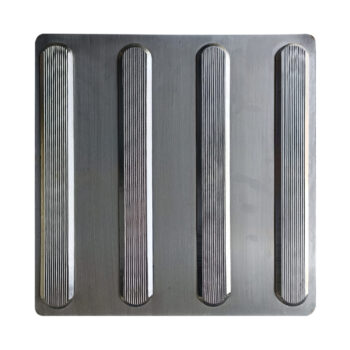Tactile Wall Tiles
SignXpress India has taken an initiative on Social Cause, Mandatory to provide Barrier-free accessibility in Schools-Colleges’ Buildings for Vision Impaired – Blind people.
Overview
When it comes to designing spaces that are accessible to everyone, one of the most important factors is ensuring that people with visual impairments can navigate the environment safely. This is where tactile wall tiles come into play. These specially designed tiles help people who are blind or have low vision to safely move around spaces, such as public buildings, airports, malls, and even homes.
In this article, we’ll explore everything you need to know about tactile wall tiles—from their types and prices to where you can find reliable tactile wall tile manufacturers in India. Let’s dive into how these innovative products can transform spaces and create an inclusive environment for all.
What Are Tactile Wall Tiles?
Tactile wall tiles are textured tiles that are designed to provide a sensory experience for people with visual impairments. These tiles have raised patterns or features that people can feel with their hands or feet, helping them navigate spaces safely. These tiles are especially useful in areas where people might face obstacles or need guidance, such as at doorways, stairs, or public restrooms.
These tiles are essential in making spaces accessible for blind people, as they can help them identify important zones and navigate them without assistance. Tactile wall tiles for the blind are designed to provide direction, warn of potential hazards, or indicate the beginning and end of different zones.

Why Are Tactile Wall Tiles Important?
Creating accessible environments for people with disabilities is not just a moral responsibility; in many places, it’s required by law. Governments and institutions across India have been pushing for more inclusive designs, which means more businesses and buildings are adopting solutions like tactile wall tiles.
Here are some key reasons why tactile tiles are so important:
- Safety: Tactile wall tiles alert blind people to potential hazards, such as steps, doors, or edges, helping them navigate without bumping into obstacles.
- Independence: With tactile tiles, people with visual impairments can find their way around independently without relying on someone else for guidance.
- Compliance: Many public spaces and buildings are required by law to follow accessibility guidelines. Tactile tiles ensure compliance with regulations.
- Universal Design: Tactile tiles make spaces accessible for everyone, regardless of their visual abilities, creating a more inclusive environment for all visitors and employees.

Types of Tactile Wall Tiles
There are several types of tactile tiles, each designed to meet specific needs and requirements. Understanding the different types can help you choose the right option for your space.
Here’s a breakdown of the most common types:
1. Directional Tactile Wall Tiles
These tiles are designed to guide individuals in a specific direction. They are typically installed on walls, floors, or pathways to help blind people follow a route easily. The raised patterns on these tiles resemble arrows or lines to direct individuals.
2. Warning Tactile Wall Tiles
Warning tiles are designed to alert individuals about an upcoming hazard, such as a staircase or an elevator. These tiles typically feature a pattern that’s rougher and raised higher, making them easier to feel. They are often used at the beginning of staircases, escalators, or doorways.
3. Combination Tactile Wall Tiles
These tiles combine both directional and warning functions. They are usually placed in areas where individuals may need to navigate while also being warned about obstacles ahead.
4. Guidance Tactile Wall Tiles
Guidance tiles are more like tactile maps that provide the layout of a building or area. These are often used in large public places like malls, airports, and hospitals to give blind people a clear sense of their surroundings.
Tactile Wall Tiles Price in India
The price of tactile wall tiles can vary depending on several factors, including the type of tile, material, design, and quantity. In India, the cost can range from as low as ₹20 per tile to ₹150 or more for premium options.
Factors Affecting the Price:
- Material: Tiles made from durable materials such as ceramic, PVC, or rubber tend to be priced higher.
- Design Complexity: Simple designs like basic directional arrows will generally be cheaper than tiles with complex patterns or additional features.
- Customization: If you need custom tiles with your specific logo or brand, the price may increase due to added production costs.
- Quantity: Buying in bulk can often reduce the price per tile, making large-scale installations more affordable.

Tactile Wall Tile Manufacturers in India
Finding a reliable manufacturer is crucial when it comes to purchasing high-quality tactile wall tiles. In India, there are several manufacturers that provide top-quality tactile tiles that meet national and international standards. Here are some well-known tactile wall tile manufacturers in India:
1. SignXpress India
SignXpress India specializes in providing durable and high-quality tactile wall tiles. We offer a wide range of tactile tiles for various purposes, including directional and warning tiles, made from premium materials.
2. Tactile Tiles India
Tactile Tiles India is known for its affordable yet durable tiles. They offer both PVC and ceramic tactile tiles with various design options to suit different needs.
3. Satyam Enterprises
Satyam Enterprises manufactures tactile tiles in a variety of colors, textures, and patterns. They are one of the trusted names in the Indian market for accessibility tiles.
4. Shree Ram Tactile Tiles
Another key player in the Indian market, Shree Ram Tactile Tiles provides eco-friendly options as well as tiles for industrial, residential, and commercial purposes.
Benefits of Tactile Wall Tiles
Installing tactile wall tiles in your building can provide several benefits:
- Improved Safety: By clearly marking hazards and guiding pathways, tactile tiles help prevent accidents.
- Enhanced Accessibility: These tiles make public spaces more accessible to people with visual impairments, promoting inclusivity.
- Brand Image: Using tactile wall tiles for the blind can improve your brand’s image by demonstrating that you care about accessibility and inclusivity.
- Legal Compliance: Many countries, including India, have strict guidelines regarding accessibility. Installing tactile tiles ensures your building complies with these regulations.
How to Choose the Right Tactile Wall Tiles for Your Space
When choosing the right tactile wall tiles, consider the following:
- Purpose: Are you looking for guidance, warning, or both?
- Location: Different areas may require different types of tiles. For example, you may need warning tiles near stairs, and directional tiles along corridors.
- Material: Choose a durable material that can withstand heavy foot traffic, especially for commercial spaces.
- Design: The design should be clear and easily recognizable. Make sure the raised patterns are large enough to be felt easily.
- Budget: Always compare prices and look for a balance between cost and quality.
Conclusion
Tactile wall tiles are a vital addition to any building looking to improve accessibility. These tiles help blind and visually impaired individuals navigate spaces safely, promoting independence and preventing accidents. Whether you’re looking for directional tiles, warning tiles, or a combination of both, the right tactile tiles will make a huge difference.
By choosing the right tactile wall tile manufacturers in India, such as SignXpress India, you can ensure that you are getting high-quality, durable, and affordable tiles for your space. So, if you want to create a safe and inclusive environment for everyone, start with the right tactile wall tiles today.
FAQs
Tactile wall tiles are textured tiles designed to help visually impaired individuals navigate spaces. The raised patterns on these tiles allow them to feel their way around, guiding them safely through areas like doorways, staircases, and corridors. They are essential in creating accessible environments for blind people and those with low vision.
There are several types of tactile wall tiles available, including:
Directional tactile tiles: To guide individuals in a specific direction.
Warning tactile tiles: To alert individuals to potential hazards, like stairs or edges.
Combination tactile tiles: A mix of directional and warning tiles.
Guidance tactile tiles: For larger spaces like malls or airports to provide a map-like layout.
The price of tactile wall tiles in India can range from ₹20 to ₹150 per tile, depending on factors like material, design, and customization. Simple tiles like directional tactile tiles are more affordable, while high-end premium tactile tiles with custom features can be more expensive.
You can buy tactile wall tiles from several manufacturers in India. Some trusted manufacturers include SignXpress India, Tactile Tiles India, Satyam Enterprises, and Shree Ram Tactile Tiles. They offer a variety of tactile tiles for different applications, including tactile tiles for the blind and commercial spaces.
Yes, tactile wall tiles are often required by law in public buildings to ensure accessibility for people with visual impairments. These tiles help meet accessibility guidelines and disability compliance regulations, ensuring that public spaces are safe and inclusive for all.































